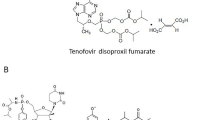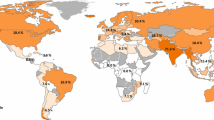Abstract
Hepatitis C virus (HCV) infection alters fatty acid synthesis and metabolism in association with HCV replication. The present study examined the effect of serum fatty acid composition on interferon (IFN)-based therapy. Fifty-five patients with HCV were enrolled and received IFN-based therapy. Patient characteristics, laboratory data (including fatty acids), and viral factors that could be associated with the anti-HCV effects of IFN-based therapy were evaluated. The effects of individual fatty acids on viral replication and IFN-based therapy were also examined in an in-vitro system. Multivariate logistic regression analysis showed that the level of serum palmitic acid before treatment and HCV genotype were significant predictors for rapid virological response (RVR), early virological response (EVR), and sustained virological response (SVR). High levels of palmitic acid inhibited the anti-HCV effects of IFN-based therapy. HCV replication assays confirmed the inhibitory effects of palmitic acid on anti-HCV therapy. The concentration of serum palmitic acid is an independent predictive factor for RVR, EVR, and SVR in IFN-based antiviral therapy. These results suggest that the effect of IFN-based antiviral therapy in patients with HCV infection might be enhanced by treatment that modulates palmitic acid levels.

Similar content being viewed by others
Abbreviations
- AUC:
-
Area under curve
- BMI:
-
Body mass index
- DMEM:
-
Dulbecco’s modified Eagle’s medium
- EVR:
-
Early virological response
- GAPDH:
-
Glyceraldehyde-3-phosphate dehydrogenase
- HCC:
-
Hepatocellular carcinoma
- HBc:
-
Hepatitis B core
- HBs-Ag:
-
Hepatitis B surface antigen
- HBV:
-
Hepatitis B virus
- HCV:
-
Hepatitis C virus
- IFN:
-
Interferon
- IL-28B:
-
Interleukin-28B
- ISDR:
-
Interferon sensitivity-determining region
- NPV:
-
Negative predictive value
- NS5:
-
Nonstructural-5
- PEG-IFN:
-
Pegylated interferon
- PPV:
-
Positive predictive value
- RBV:
-
Ribavirin
- ROC:
-
Receiver operating characteristics
- RVR:
-
Rapid virological response
- SVR:
-
Sustained virological response
- PCR:
-
Polymerase chain reaction
References
Lavanchy D (2009) The global burden of hepatitis C. Liver Int 29:74–81
Manns MP, McHutchison JG, Gordon SC, Rustgi VK, Shiffman M, Reindollar R, Goodman ZD, Koury K, Ling M, Albrecht JK (2001) Peginterferon alpha-2b plus ribavirin compared with interferon alpha-2b plus ribavirin for initial treatment of chronic hepatitis C: a randomized trial. Lancet 358:958–965
Davis GL, Wong JB, McHutchison JG, Manns MP, Harvey J, Albrecht J (2003) Early virologic response to treatment with peginterferon alpha-2a plus ribavirin in patients with chronic hepatitis C. Hepatology 38:645–652
Feld JJ, Nanda S, Huang Y, Chen W, Cam M, Pusek SN, Schweigler LM, Theodore D, Zacks SL, Liang TJ, Fried MW (2007) Hepatic gene expression during treatment with peginterferon and ribavirin: identifying molecular pathways for treatment response. Hepatology 46:1548–1563
Hotamisligil GS (2006) Inflammation and metabolic disorders. Nature 444:860–867
Anderson SG, Sanders TA, Cruickshank JK (2009) Plasma fatty acid composition as a predictor of arterial stiffness and mortality. Hypertension 53:839–845
Miyake T, Akbar SM, Yoshida O, Chen S, Hiasa Y, Matsuura B, Abe M, Onji M (2010) Impaired dendritic cell functions disrupt antigen-specific adaptive immune responses in mice with nonalcoholic fatty liver disease. J Gastroenterol 45:859–867
Puri P, Wiest MM, Cheung O, Mirshahi F, Sargeant C, Min HK, Contos MJ, Sterling RK, Fuchs M, Zhou H, Watkins SM, Sanyal AJ (2009) The plasma lipidomic signature of nonalcoholic steatohepatitis. Hepatology 50:1827–1838
Moriya K, Todoroki T, Tsutsumi T, Fujie H, Shintani Y, Miyoshi H, Ishibashi K, Takayama T, Makuuchi M, Watanabe K, Miyamura T, Kimura S, Koike K (2001) Increase in the concentration of carbon 18 monosaturated fatty acids in the liver with hepatitis C: analysis in transgenic mice and humans. Biochem Biophys Res Commun 281:1207–1212
Miyoshi H, Moriya K, Tsutsumi T, Shinzawa S, Fujie H, Shintani Y, Fujinaga H, Goto K, Todoroki T, Suzuki T, Miyamura T, Matsuura Y, Yotsuyanagi H, Koike K (2011) Pathogenesis of lipid metabolism disorder in hepatitis C: polyunsaturated fatty acids counteract lipid alterations induced by the core protein. J Hepatol 54:432–438
Akuta N, Kumada H (2008) Treatment guideline for HCV infection. Nihon Shokakibyo Gakkai Zasshi (in Japanese) 105:186–190
Examination Committee of Criteria for ‘Obesity Disease’ in Japan, Japan Society for the Study of Obesity (2002) New criteria for ‘obesity disease’ in Japan. Circ J 66:987–992
Chayama K, Tsubota A, Arase Y, Saitoh S, Koida I, Ikeda K, Matsumoto T, Kobayashi M, Iwasaki S, Koyama S, Morinaga T, Kumada H (1993) Genotypic subtyping of hepatitis C virus. J Gastroenterol Hepatol 8:150–156
Tanaka Y, Nishida N, Sugiyama M, Kurosaki M, Matsuura K, Sakamoto N, Nakagawa M, Korenaga M, Hino K, Hige S, Ito Y, Mita E, Tanaka E, Mochida S, Murawaki Y, Honda M, Sakai A, Hiasa Y, Nishiguchi S, Koike A, Sakaida I, Imamura M, Ito K, Yano K, Masaki N, Sugauchi F, Izumi N, Tokunaga K, Mizokami M (2009) Genome-wide association of IL28B with response to pegylated interferon-alpha and ribavirin therapy for chronic hepatitis C. Nat Genet 41:1105–1109
Ge D, Fellay J, Thompson AJ, Simon JS, Shianna KV, Urban TJ, Heinzen EL, Qiu P, Bertelsen AH, Muir AJ, Sulkowski M, McHutchison JG, Goldstein DB (2009) Genetic variation in IL28B predicts hepatitis C treatment-induced viral clearance. Genetic variation in IL28B predicts hepatitis C treatment-induced viral clearance. Nature 461:399–401
Okamoto K, Akuta N, Kumada H, Kobayashi M, Matsuo Y, Tazawa H (2007) A nucleotide sequence variation detection system for the core region of hepatitis C virus-1b. J Virol Methods 141:1–6
Enomoto N, Sakuma I, Asahina Y, Kurosaki M, Murakami T, Yamamoto C, Ogura Y, Izumi N, Marumo F, Sato C (1996) Mutations in the nonstructural protein 5A gene and response to interferon in patients with chronic hepatitis C virus 1b infection. N Engl J Med 334:77–81
Hiasa Y, Kuzuhara H, Tokumoto Y, Konishi I, Yamashita N, Matsuura B, Michitaka K, Chung RT, Onji M (2008) Hepatitis C virus replication is inhibited by 22beta-methoxyolean-12-ene-3beta, 24(4beta)-diol (ME3738) through enhancing interferon-beta. Hepatology 48:59–69
Hiasa Y, Blackard JT, Lin W, Kamegaya Y, Horiike N, Onji M, Schmidt EV, Chung RT (2006) Cell-based models of sustained, interferon-sensitive hepatitis C virus genotype 1 replication. J Virol Methods 132:195–203
Wakita T, Pietschmann T, Kato T, Date T, Miyamoto M, Zhao Z, Murthy K, Habermann A, Kräusslich HG, Mizokami M, Bartenschlager R, Liang TJ (2005) Production of infectious hepatitis C virus in tissue culture from a cloned viral genome. Nat Med 11:791–796
Kapadia SB, Chisari FV (2005) Hepatitis C virus RNA replication is regulated by host geranylgeranylation and fatty acids. Proc Natl Acad Sci USA 102:2561–2566
Leu GZ, Lin TY, Hsu JT (2004) Anti-HCV activities of selective polyunsaturated fatty acids. Biochem Biophys Res Commun 318:275–280
Poynard T, Marcellin P, Lee SS, Niederau C, Minuk GS, Ideo G, Bain V, Heathcote J, Zeuzem S, Trepo C, Albrecht J (1998) Randomised trial of interferon alpha2b plus ribavirin for 48 weeks or for 24 weeks versus interferon alpha2b plus placebo for 48 weeks for treatment of chronic infection with hepatitis C virus. International Hepatitis Interventional Therapy Group (IHIT). Lancet 352:1426–1432
Barnes E, Webster G, Whalley S, Dusheiko G (1999) Predictors of a favorable response to alpha interferon therapy for hepatitis C. Clin Liver Dis 3:775–791
Bressler BL, Guindi M, Tomlinson G, Heathcote J (2003) High body mass index is an independent risk factor for nonresponse to antiviral treatment in chronic hepatitis C. Hepatology 38:639–644
Arase Y, Kumada H, Chayama K, Tsubota A, Koida I, Ikeda K, Saitoh S, Matsumoto T, Kobayashi M (1994) Interferon retreatment of nonresponders with HCV-RNA-positive chronic hepatitis C. J Gastroenterol 29:299–304
Irmisch G, Hoeppner J, Thome J, Richter J, Fernow A, Reisinger EC, Lafrenz M, Loebermann M (2011) Serum fatty acids, antioxidants, and treatment response in hepatitis C infection: greater polyunsaturated fatty acid and antioxidant levels in hepatitis C responders. J Clin Lipidol 5:288–293
Huang H, Chen Y, Ye J (2007) Inhibition of hepatitis C virus replication by peroxidation of arachidonate and restoration by vitamin E. Proc Natl Acad Sci USA 104:18666–18670
Salem ML, El-Demellawy M, El-Azm AR (2010) The potential use of toll-like receptor agonists to restore the dysfunctional immunity induced by hepatitis C virus. Cell Immunol 262:96–104
Hiasa Y, Horiike N, Akbar SM, Saito I, Miyamura T, Matsuura Y, Onji M (1998) Low stimulatory capacity of lymphoid dendritic cells expressing hepatitis C virus genes. Biochem Biophys Res Commun 249:90–95
Hiasa Y, Takahashi H, Shimizu M, Nuriya H, Tsukiyama-Kohara K, Tanaka T, Horiike N, Onji M, Kohara M (2004) Major histocompatibility complex class-I presentation impaired in transgenic mice expressing hepatitis C virus structural proteins during dendritic cell maturation. J Med Virol 74:253–261
Enomoto N, Sakuma I, Asahina Y, Kurosaki M, Murakami T, Yamamoto C, Izumi N, Marumo F, Sato C (1995) Comparison of full-length sequences of interferon-sensitive and resistant hepatitis C virus 1b. Sensitivity to interferon is conferred by amino acid substitutions in the NS5A region. J Clin Invest 96:224–230
Akuta N, Suzuki F, Kawamura Y, Yatsuji H, Sezaki H, Suzuki Y, Hosaka T, Kobayashi M, Kobayashi M, Arase Y, Ikeda K, Kumada H (2007) Predictive factors of early and sustained responses to peginterferon plus ribavirin combination therapy in Japanese patients infected with hepatitis C virus genotype 1b: amino acid substitutions in the core region and low-density lipoprotein cholesterol levels. J Hepatol 46:403–410
Akuta N, Suzuki F, Sezaki H, Suzuki Y, Hosaka T, Someya T, Kobayashi M, Saitoh S, Watahiki S, Sato J, Kobayashi M, Arase Y, Ikeda K, Kumada H (2006) Predictive factors of virological non-response to interferon-ribavirin combination therapy for patients infected with hepatitis C virus of genotype 1b and high viral load. J Med Virol 78:83–90
Acknowledgments
This work was supported in part by a Grant-in-Aid for Scientific Research [JSPS KAKENHI 23700907 to T.M.; JSPS KAKENHI 21590848 to Y.H.] from the Japanese Ministry of Education, Culture, Sports, Science and Technology, and a Grant-in-Aid for Scientific Research and Development from the Japanese Ministry of Health, Labor and Welfare to Y.H. We thank Ms. Satomi Yamanaka, Ms. Chie Matsugi and Ms. Sakiko Inoh for excellent technical assistance. The sequence of the probe and primers for the TaqMan assay for detecting rs8099917 was kindly provided by Dr. Yasuhito Tanaka (Department of Virology and Liver Unit, Nagoya City University Graduate School of Medical Sciences, Nagoya, Japan), and rs12979860 was provided by Dr. David B. Goldstein (Center for Human Genome Variation, Duke University, Durham, NC, USA). The HCV replication system with pJFH1-full was kindly provided by Dr. Takaji Wakita (Department of Virology II, National Institute of Infectious Diseases, Tokyo, Japan), and that with pT7-flHCV-Rz was provided by Dr. Raymond T. Chung (Gastrointestinal Unit, Massachusetts General Hospital, Boston, MA, USA). We also thank Dr. Francis V. Chisari (Department of Immunology and Microbial Science, The Scripps Research Institute, La Jolla, CA, USA) for providing the Huh7.5.1 human cancer cell lines.
Conflict of interest
None.
Author information
Authors and Affiliations
Corresponding author
Electronic supplementary material
Below is the link to the electronic supplementary material.
About this article
Cite this article
Miyake, T., Hiasa, Y., Hirooka, M. et al. High Serum Palmitic Acid is Associated with Low Antiviral Effects of Interferon-Based Therapy for Hepatitis C Virus. Lipids 47, 1053–1062 (2012). https://doi.org/10.1007/s11745-012-3716-8
Received:
Accepted:
Published:
Issue Date:
DOI: https://doi.org/10.1007/s11745-012-3716-8




